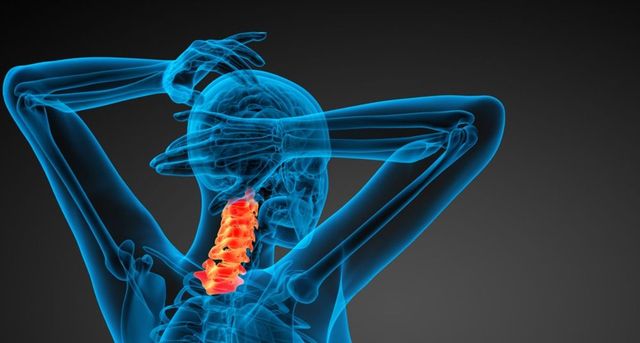Top 10 Benefits of Spinal Decompression for Long-Term Spine Health
Wiki Article
Checking Out Spinal Decompression Techniques: What You Need to Know for Better Spine Treatment
Spinal decompression techniques are important for people experiencing persistent pain in the back or spinal problems. These methods vary from non-invasive therapies to surgical alternatives, each created to ease pressure on the spinal column. Understanding these strategies is vital for reliable spinal column treatment. Not all strategies are suitable for every problem. The subtleties behind each technique warrant better assessment, as they can substantially affect recovery and overall wellness end results. What factors should one think about before choosing?Comprehending Spinal Decompression
Spinal decompression may seem facility, it basically refers to a selection of strategies aimed at relieving stress on the spinal cord and surrounding nerves. The spinal column is a critical structure that supports the body and protects vital neurological pathways. When compression occurs, it can bring about discomfort, pain, and reduced mobility. Comprehending spinal decompression entails recognizing the reasons for this stress, such as herniated discs, spinal constriction, or injury. By attending to these underlying issues, decompression strategies seek to recover correct positioning and function. This process can include both non-surgical and medical approaches, customized to individual patient needs. The objective is to enhance the lifestyle by eliminating discomfort, boosting pose, and assisting in much better movement. As recognition of spinal wellness expands, the value of recognizing spinal decompression comes to be significantly pertinent for those looking for reliable therapy choicesUsual Spinal Decompression Strategies
Spinal decompression methods include a variety of approaches created to alleviate stress on the back and its affiliated frameworks. These methods can be generally classified right into medical and non-surgical methods. Non-surgical techniques consist of spinal traction, where gentle drawing pressures are related to the back, producing space in between vertebrae. This can alleviate nerve compression and promote healing. Chiropractic care adjustments also drop under this group, focusing on straightening the spinal column to improve feature.Surgical decompression techniques include procedures such as laminectomy, where a section of the vertebra is eliminated to eliminate pressure on the spine or nerves. Discectomy, an additional medical option, entails the elimination of herniated disc material. Additionally, minimally intrusive strategies, like endoscopic discectomy, are acquiring appeal due to their decreased recovery times. Each method serves a particular objective and may be picked based on private client demands and the extent of their spinal problem.
Advantages of Spinal Decompression
When thinking about the various strategies to handling spinal issues, the benefits of spinal decompression techniques end up being noticeable. These methods intend to alleviate pressure on the spinal discs and nerves, which can relieve pain and boost total spinal health. By developing room in between vertebrae, decompression advertises enhanced blood circulation and nutrient circulation to the impacted locations, helping with recovery and healing.Additionally, spinal decompression can assist recover the natural alignment of the spine, potentially lowering the threat of future injuries. Patients frequently report increased flexibility and flexibility list below therapy, bring about an improved lifestyle. Additionally, the reduction in pressure can reduce signs and symptoms linked with conditions such as herniated discs, sciatic nerve pain, and spinal stenosis, supplying a non-invasive choice to even more intrusive treatments. In general, spinal decompression strategies offer a variety of physical and therapeutic benefits, making them a useful part of extensive back care.

That Can Gain From Spinal Decompression?
Individuals experiencing chronic pain in the back, herniated discs, or spinal stenosis might discover significant alleviation through spinal decompression techniques. This non-invasive treatment can be especially advantageous for those experiencing nerve compression signs and symptoms, such as tingling, tingling, or weakness in the limbs. Athletes recuperating from injuries or individuals with degenerative disc condition may likewise consider spinal decompression as a viable choice for discomfort management and improved flexibility.Candidates for spinal decompression commonly consist of those that have actually not responded well to conventional therapies, such as medicines or physical therapy. It can likewise serve as an alternative for patients looking for to stay clear of medical intervention. Generally, spinal decompression methods can give a healing alternative for different individuals encountering spinal concerns, aiding them restore recommended you read a greater top quality of life and functional capability. Consulting a healthcare professional is necessary to establish the viability of this therapy for certain conditions.
Considerations and Preventative Measures for Spinal Decompression

The kind of spinal decompression method-- whether non-surgical or surgical-- should line up with the individual's certain problem and total health and wellness status. Surveillance throughout the treatment is important to attend to any adverse reactions without delay. People must likewise recognize that spinal decompression is not a one-size-fits-all service; a comprehensive treatment plan might consist of physical therapy or lifestyle modifications to support recovery. Generally, adhering to these preventative measures can greatly improve the effectiveness of spinal decompression treatments and promote excellent spinal column health.

Frequently Asked Concerns
For how long Does a Common Spinal Decompression Session Last?
A regular spinal decompression session lasts in between 30 to 45 minutes. This period enables for suitable therapy while making sure the patient remains comfy and gets appropriate focus to their particular spinal problems and needs.Can Spinal Decompression Be Done at Home?
Spinal decompression can be done in your home via particular workouts and devices, such as inversion tables or back braces. Appointment with a medical care specialist is suggested to ensure safety and efficiency in private instances.Is Spinal Decompression Painful?
Spinal decompression is normally not agonizing; however, people may experience light pain or pressure during the procedure. Pain levels can vary based upon the person's problem and the approach made use of for decompression.Just How Numerous Sessions Are Usually Needed for Relief?
Usually, individuals may require 6 to 10 sessions of spinal decompression treatment to experience substantial relief (Chiropractor). However, the exact number can differ based upon specific you can look here conditions and actions to treatment, requiring tailored analysis by medical care expertsExist Any Type Of Age Limitations for Spinal Decompression?
There are generally no stringent age limitations for spinal decompression therapy. Nonetheless, suitability may depend upon private health and wellness conditions and the certain technique used, so assessment with a medical care expert is browse around this site recommended for individualized advice.Spinal decompression techniques are essential for individuals experiencing chronic back discomfort or spinal problems. Spinal decompression may seem complicated, it basically refers to a range of methods intended at easing pressure on the spinal cable and surrounding nerves. When thinking about the different methods to handling spinal concerns, the benefits of spinal decompression strategies become evident. People suffering from persistent back pain, herniated discs, or spinal stenosis might find substantial alleviation through spinal decompression methods. On the whole, spinal decompression methods can offer a restorative choice for various individuals encountering spinal issues, assisting them gain back a higher high quality of life and practical ability.
Report this wiki page